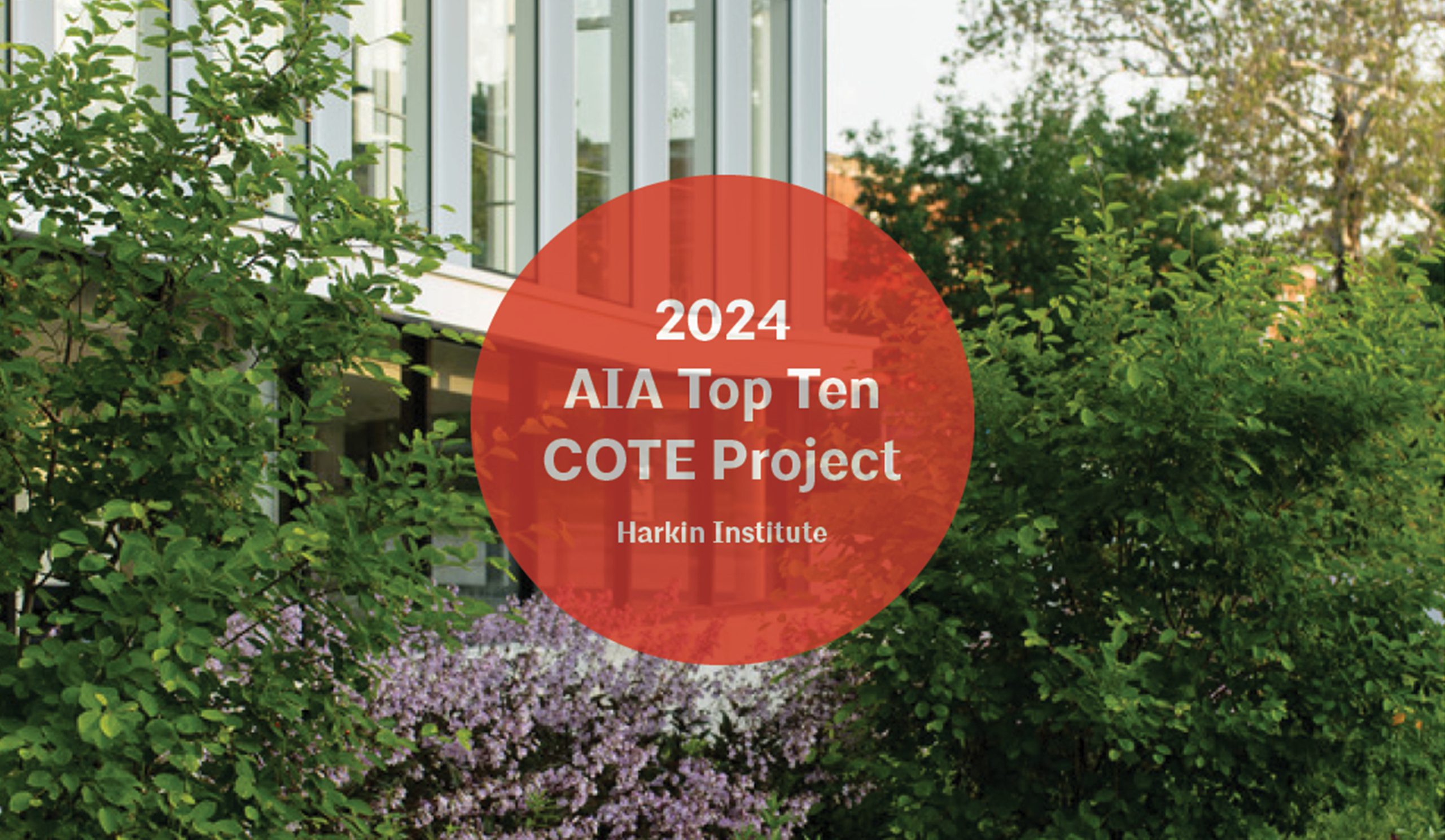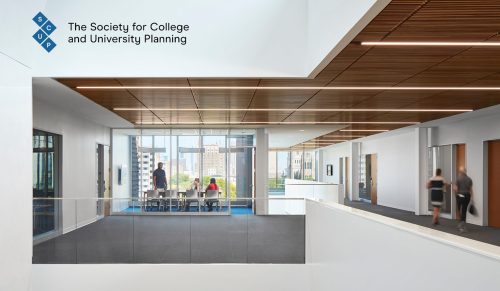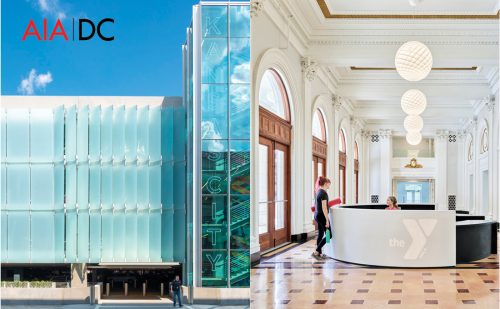
2024 AIA COTE Top Ten Award recipient Tom and Ruth Harkin Center exemplifies inclusive, sustainable design
DES MOINES, IA (June 10, 2024) —BNIM is honored to announce that The Tom and Ruth Harkin Center is the recipient of an American Institute of Architects Committee on the Environment (AIA COTE) Top Ten Award for 2024. The project serves as a new workplace, research space, and center for engagement for The Harkin Institute for Public Policy and Citizen Engagement at Drake University in Des Moines, Iowa. The Tom and Ruth Harkin Center was recognized with the COTE Top Ten Award at AIA National Conference on Architecture & Design Awards Gala in Washington D.C. on June 7.
The COTE Top Ten Awards Program is the industry’s best-known awards program recognizing innovative projects integrating sustainability and design excellence. The Tom and Ruth Harkin Center exemplifies high-performance, inclusive design strategies, demonstrating the AIA’s Framework for Design Excellence and bringing empathy and equity to the forefront of sustainable design. This is the 12th AIA COTE Top Ten Award received by BNIM, including a COTE Top Ten Plus award.
The Tom and Ruth Harkin Center was designed to elevate the Harkin Institute in its mission “to improve the lives of all Americans by giving policy makers access to high-quality information and engaging citizens as active participants in the formation of public policy.” Former Senator Tom Harkin, lead author of the American with Disabilities Act (ADA) in 1990, desired a facility that would reflect the Institute’s values by exceeding the baseline set by the ADA to become a model of innovation for inclusive, accessible workplaces.
“We are honored the AIA has recognized The Tom and Ruth Harkin Center, home of the Harkin Institute at Drake University, as a 2024 Committee on the Environment Top Ten Award recipient. The building is intended to serve as a model expanding the definition of sustainable design to include equity and inclusion. We are excited to continue our research with The Harkin Institute in creating future editions of ALL: The Making of the Tom and Ruth Harkin Center + A Guidebook of Strategies for Inclusive Design.” – Kevin Nordmeyer, FAIA, LEED AP
BNIM and MillerKnoll worked with Sen. Harkin, the Harkin Institute, Drake University, and the Harkin Institute’s People with Disabilities Core Advisory Committee to evaluate inclusive design principles in response to barriers that individuals still encounter within built environments each day. Key goals included creating space where individuals do not have to ask for accommodations; providing function in the most inclusive way possible; allowing for an environment that is intuitive; and ensuring no limitations in one’s ability to use the space.
Aligned with AIA’s Framework for Design Excellence principles, including Design for Equitable Communities and Design for Well-being, inclusive design strategies throughout the building focus on providing all users and visitors with generous space, equitable experiences, clear paths, and individual empowerment. The facility features a spectrum of public spaces and dedicated workspaces for research and collaboration, connected by a two-story ramp that serves as both the primary pathway between floors and a prominent symbol of inclusive design for all.
Addressing the Framework’s 10 principles, the design team holistically incorporated sustainability throughout the design of the Tom and Ruth Harkin Center, identifying key goals with the Harkin Institute and University stakeholders at beginning of the project. The building sets a new standard for the campus by implementing an all-electric building system. Given the building’s passive design and application of efficient systems, the building achieves a 71 percent energy savings over a baseline building and meets the Architecture 2030 Challenge. The building also includes a 68 kW array of photovoltaics on the roof and parking canopies.
The Tom and Ruth Harkin Center’s passive design, orientation, and shape allow for optimal daylight and 91 percent of regularly used spaces to have access to quality views, enhancing wayfinding and overall building user experience. The building demonstrates a restorative approach to site and ecosystem, allowing for storm water management through native planted bioretention cells, which restore the site to natural landscape, reduce urban heat island effect, and welcome urban wildlife.
BNIM and MillerKnoll have continued collaboration with the Harkin Institute following the design of the Tom and Ruth Harkin Center, co-authoring and publishing ALL: The Making of the Tom and Ruth Harkin Center + A Guidebook of Strategies for Inclusive Design (ALL). The publication shares the design process of the Tom and Ruth Harkin Center and provides key strategies to create a unified approach to inclusive design within the larger definition of high-performing sustainable buildings. The second edition of ALL was recently published in spring of 2024.
###
ABOUT BNIM
BNIM is an employee-owned design company and innovative leader in designing high-performance, human-purposed environments. The services we provide—architecture, interior design, landscape design, sustainability leadership and consulting, graphic design, and planning—are guided by our core purpose: We design and deliver beautiful, integrated environments to inspire change and enhance the human condition. BNIM has been recognized with more than 600 awards for exceptional design and thought leadership, including the 2011 AIA National Architecture Firm Award, and the firm has emerged nationally as a leading resource for established methodologies, innovative technologies, and cutting-edge research in architecture, planning, and landscape design. Through a process of integrated design, which is both an organized collaboration between disciplines and an interweaving and interconnectivity of building systems, our team creates designs that are both environmentally responsible and achieve the highest level of design excellence. For more information, contact Beena Ramaswami at bramaswami@bnim.com.

